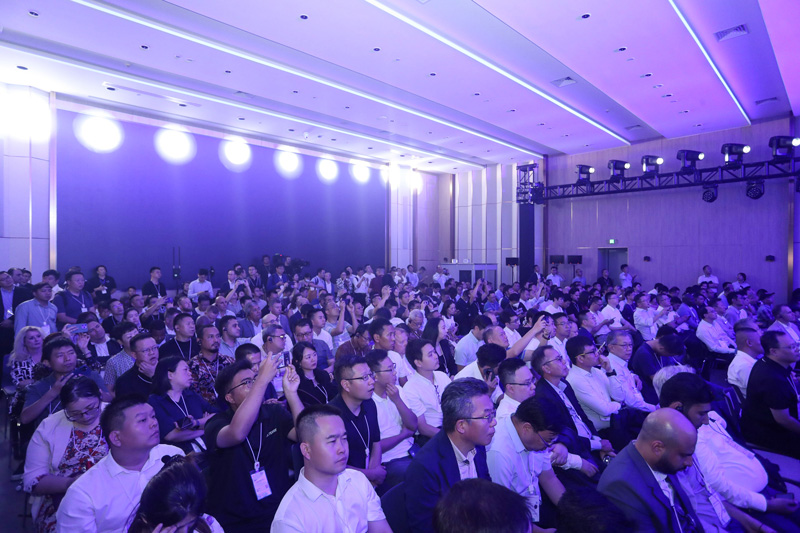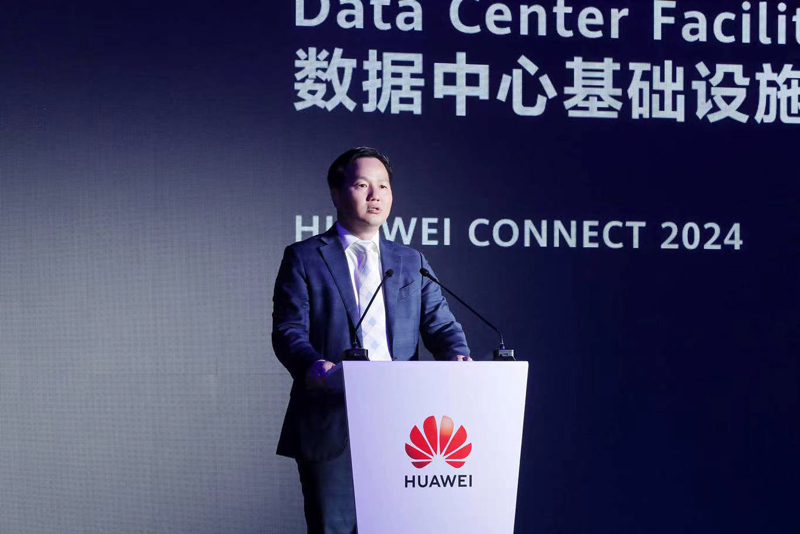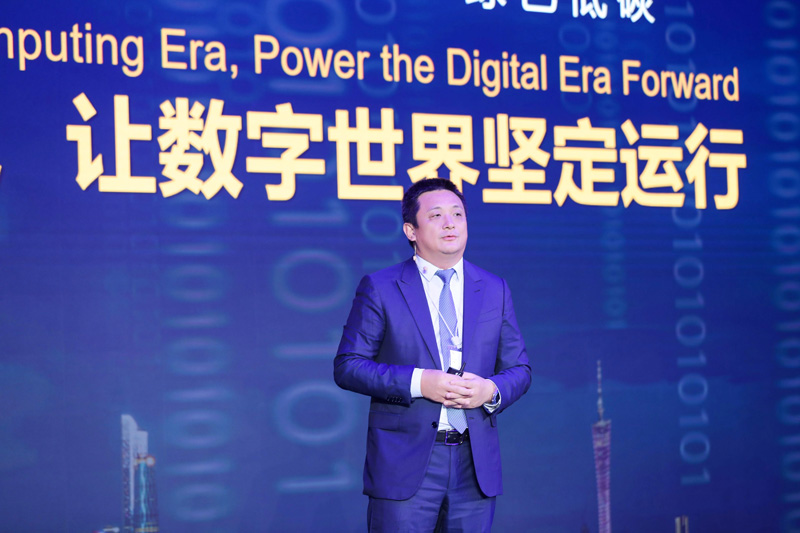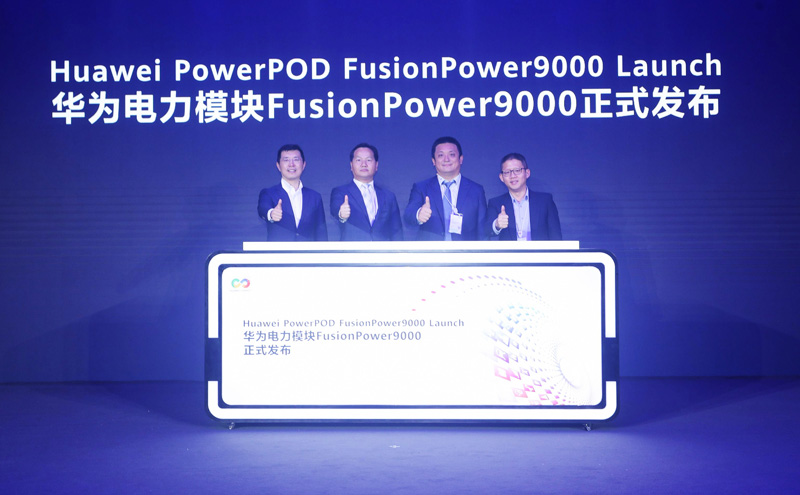[China, Shanghai, September 19, 2024] Huawei Digital Power held the Data Center Facility Summit during HUAWEI CONNECT 2024 in Shanghai. More than 300 industry leaders, technical experts, and ecosystem partners around the world gathered there to explore new trends and technologies of the data center industry for the intelligent computing era and share their innovative practices of building low-carbon and reliable data centers. By accelerating industry intelligence, they aim to build a thriving industry ecosystem and create a brilliant future of intelligent computing to power the digital era forward.

Embracing AI Opportunities and Building a Better Intelligent World
Steve Kim, President of Huawei Data Center Facility & Critical Power Business, shared valuable insights in the opening speech at the Data Center Facility Summit: The intelligent computing era is coming fast, posing higher requirements for data centers. Huawei leverages its highly reliable products, global ecosystem, and professional services to develop reliable, simple, green, and smart data center facility solutions.
Its R&D capabilities extend from components to solutions, comprehensively ensuring high product reliability.
The global ecosystem provides customers with one-stop data center consulting, design, and delivery services.
The global service network offers professional services to customers across more than 170 countries.
According to Kim, Huawei Digital Power is eager to work with industry leaders and elites to redefine data center reliability with stricter safety and quality standards, promote healthy industry development, and embrace new opportunities of intelligent transformation to power the digital era forward.
 Steve Kim, President of Huawei Data Center Facility & Critical Power Business
Steve Kim, President of Huawei Data Center Facility & Critical Power Business
Huawei releases top 10 construction guidelines for intelligent computing center facilities.
At the summit, Bob He, Vice President of Huawei Digital Power and President of Huawei Data Center Facility & Critical Power Product Line, delivered a keynote speech on "Embrace the Intelligent Computing Era, Power the Digital Era Forward."
According to Mr. He, as AIGC applications accelerate, massive intelligent computing requirements will emerge, creating a trillion-dollar intelligent computing market. Along with the evolution from general-purpose computing to AI computing, the performance and power of data center servers keep increasing and the impact scope of faults expands continuously, posing challenges such as security, high power density, high energy consumption, and uncertainty. Huawei proposes "Reliable, Flexible, and Sustainable" and has released top 10 construction Principles for intelligent computing center facilities to build reliable data center facilities for intelligent computing, aiming to power the digital era forward.
 Bob He, Vice President of Huawei Digital Power and President of Huawei Data Center Facility & Critical Power Product Line
Bob He, Vice President of Huawei Digital Power and President of Huawei Data Center Facility & Critical Power Product Line
- Reliability is the core competitiveness of data center facilities.
1. Isolated energy storage: For lithium batteries in data centers, Huawei proposes the isolated deployment of energy storage systems. An energy storage system can be deployed in a remote outdoor area so that electrochemical energy storage is isolated from IT services, maximizing data center safety. If an energy storage system is deployed inside a data center building, the deployment must meet relevant requirements, with fire resistance, water fire extinguishing, and emergency ventilation comprehensively considered.
2. Distributed architecture: Electromechanical equipment should be deployed in distributed mode to minimize fault domains. One power or cooling system can be deployed in a single container to prevent fault spreading and eliminate the impact on services.
3. Continuous cooling: To cool down high-density equipment, data centers should provide the continuous cooling capability to prevent service interruption in case of abnormalities.
4. High-reliable products: As a key part for building a reliable data center, product quality should be managed comprehensively throughout design, incoming materials, production, testing, networks, and processes, delivering high-quality products to ensure end-to-end safety.
5. Professional services: Professional and proactive services from deployment to maintenance eliminate risks and ensure that systems run reliably for a long term.
6. Smart management: AI technologies can be applied in data centers to prevent faults such as power failure, fire, and overheat. AI will become a must-have technology for intelligent O&M.
- Flexibility is preferred to address the uncertainties of intelligent computing centers.
7. Subsystem decoupling: To address uncertain requirements in the intelligent computing era, subsystem decoupling can be adopted to meet basic requirements for flexible evolution of data centers. Key subsystems can be decoupled to implement on-demand construction.
8. Flexible architecture: Data center standardization, modular design, and prefabricated modules enhance architecture flexibility, and therefore play a key role in flexible evolution, smooth capacity expansion, and quick delivery of intelligent computing centers.
- Sustainability is the only choice to reduce energy consumption.
9. High density and efficiency: High-density deployment and high-efficiency design save space and energy for electromechanical equipment in intelligent computing centers. High density and efficiency will be important features of green and low-carbon intelligent computing products.
10. Air-liquid convergence: Liquid cooling is the key to solving the heat dissipation problem of intelligent computing centers with high power density. Air-liquid convergence and an adjustable air-liquid ratio can reduce the total demand for cooling capacity, simplify delivery, and improve the energy-saving performance of systems. Air-liquid convergence and an adjustable air-liquid ratio will be indispensable for cooling high-density intelligent computing centers.
Huawei's innovative FusionPower9000 solution uses a fully decoupled architecture to build a power system in a single container. The solution can be rapidly deployed outdoors without occupying equipment room space, shortening the time to market (TTM) from 28 weeks to 18 weeks. It also supports phased construction and on-demand capacity expansion, offering high power supply flexibility for intelligent computing.

Huawei has also developed an air-liquid hybrid cooling solution that works based on an adjustable air-liquid ratio to flexibly meet the cooling requirements of different servers. The solution ensures zero cooling interruption, optimizes the power usage effectiveness (PUE), and saves energy for data centers.
In summary of the development history of Huawei, Mr. He said that Huawei has always been committed to developing industry-leading solutions with innovative technologies and concepts, contributing to the industry development and bringing the industry to a new level. Looking ahead, Huawei will intensify efforts to innovate in the synergy of power generation-grid-load-storage, power supply and cooling architectures, and intelligent applications to promote sustainable industry development. Huawei will deepen its cooperation with customers, partners, and industry organizations to build reliable intelligent computing centers for powering the digital era forward.
During HUAWEI CONNECT 2024, the Huawei Data Center Facility exhibition area focuses on efficient power usage and showcases three scenario-based solutions: large-scale computing center facility, medium/small computing center facility, and critical power supply. For large-scale computing center facilities, Huawei FusionPower6000 3.0 can be a preferred choice as it provides one power system in one row and reduces the number of cabinets from 18 to 10, cutting the installation footprint by 30%. The solution is power-saving, time-saving, and worry-free. For medium/small computing center facilities, Huawei FusionModule2000 6.0 adopts a fully modular design. The solution allows a data center to be constructed in a single module, shortening the deployment period from one month to seven days. Furthermore, the unique continuous cooling architecture ensures zero cooling interruption. For critical power supply, Huawei UPS features high density and efficiency, supplying reliable power to mission-critical equipment.
 Huawei FusionModule2000 6.0
Huawei FusionModule2000 6.0
 CDU
CDU
Facing infinite opportunities in the AI era, Huawei will cooperate with more customers and partners to embrace new changes in intelligent computing and innovate continuously to develop reliable, flexible, and sustainable data center facility solutions. Huawei will accelerate digital and intelligent transformation to unleash infinite potential and power the digital era forward.

 Search
Search




 Search
Search


